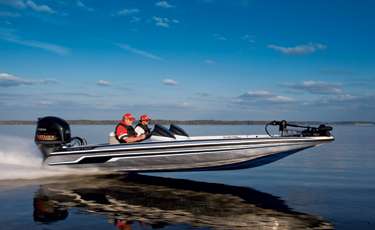
It's that time of year when first light comes later and darkness sweeps across the lake long before the bass quit biting.
That means we need to be using our boat's navigational lights.
And I emphasize the word "need."
Many boaters don't bother. They leave the lights stashed in a storage compartment when they should be locked onto the bow and stern.
Not a wise move.
A good friend of mine fished after dark frequently and never used his lights for years. It caught up with him one evening when another careless boater in a pontoon boat crashed into him while both were running. Because both engines were under power and lights weren't on, neither heard or saw the other. Fortunately, no one was injured but my friend's boat suffered substantial damage.
After hearing of his experience, I use my lights anytime visibility is limited. So should you.
Actually, most state laws require the use of nav lights from sundown to sunup or when boating in tough visibility conditions.
Most anglers don't understand navigation light usage, so Yamaha Outboards recently produced an e-newsletter that served as a good refresher on the subject.
For example, did you know?
- A rowboat isn't required to have nav lights, but rowboat anglers must have either a white flashlight or lantern to alert another boater of their presence.
- Power boats must have a white light on the stern and a red/green light on the centerline bow. The red light on the bow is to be displayed on the port side (left) and green on the right to give other boaters an indication of which side of your boat they're seeing and direction you're heading.
- If you stop and anchor, only the transom white light needs to be displayed.
Most new boats come with lights or at least have the power outlets for them. Anglers should check the lights periodically to make sure the connections are good and still work. Don't wait until you need them!
Common sense comes into play when fishing at night, too. Darkness can play tricks on you, and the lake looks considerably different after dark. Motor cautiously. Small islands, swimming platforms, dangerous shallow areas and other objects can appear before you have time to react.
In addition, consider dimming your dash or fishing electronics when driving a boat at night. Many of the newer graphs have night modes that are less harsh on the eyes. When the screens are lit in daytime mode, your eyes take awhile to adjust and vision is impaired.
Also, consider buying a small, LED light that clips onto the bill of a fishing cap. It's great for tying knots or looking for something on the bottom of the boat. Cap lights prevent you from looking directly into the light of a flashlight, hence they are less blinding.
And, finally, carry a spotlight that operates off your boat's battery power. That light can come in handy when trying to locate boat ramps on a dark shoreline.

